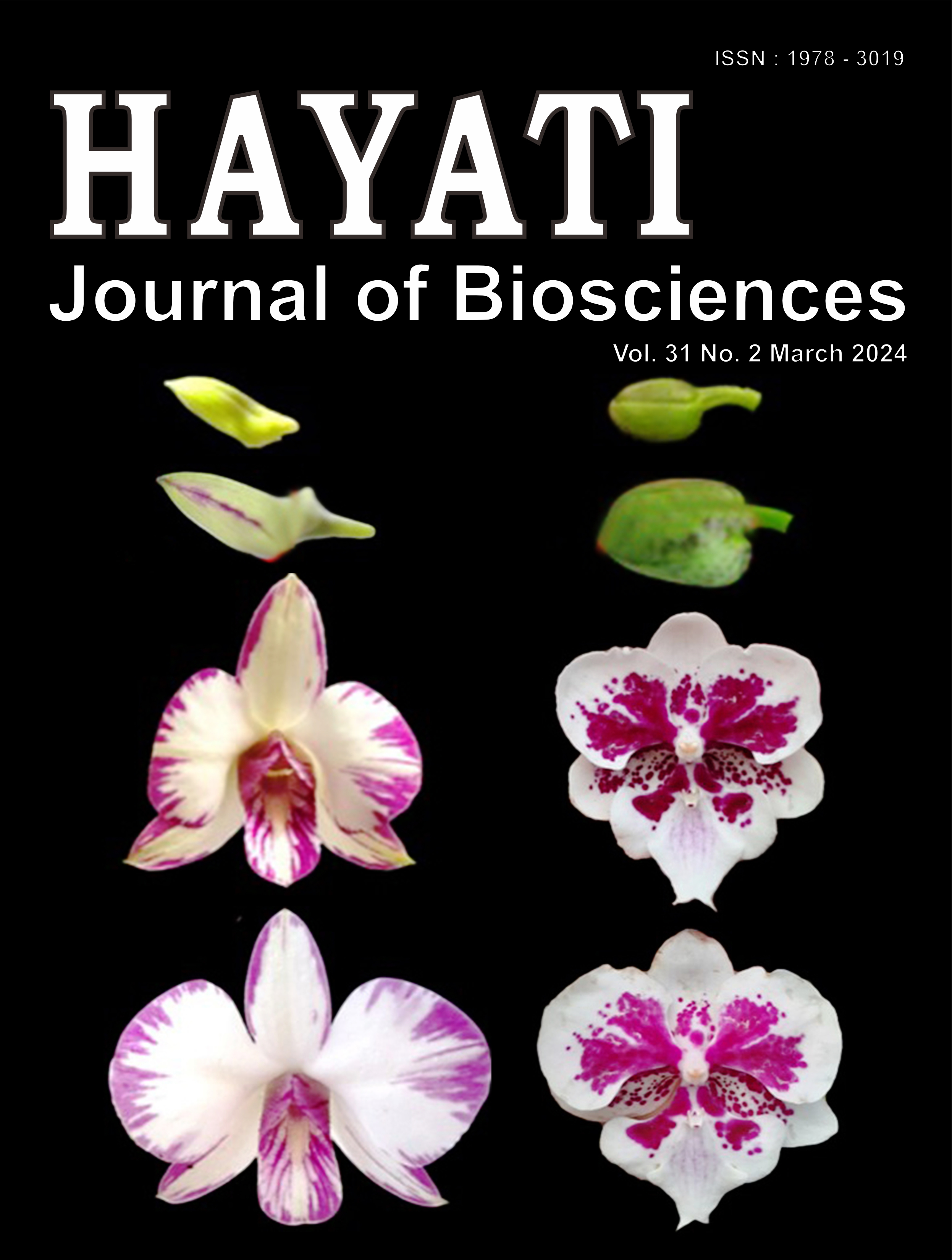Genetic Variability of the Long-Tailed Macaque (Macaca fascicularis) Populations in Urban Habitat in Padang City, West Sumatra, Indonesia
Abstract
The long-tailed macaque (Macaca fascicularis) is a primate species recognized for its exceptional ability to adapt to urban habitat. However, urban anthropogenic activities contribute to the fragmentation of macaque natural habitat, affecting genetic variation among distinct populations. Therefore, this study aimed to assess the genetic variability of M. fascicularis populations in Padang City, West Sumatra, Indonesia. A total of 70 fecal samples from the wild long-tailed macaques in Gunung Padang (GPD), Gunung Meru (GMR), and Gunung Pangilun (GPG) were collected using a non-invasive method. Conventional PCR amplification and Sanger sequencing were conducted to examine a 1,200-bp mitochondrial DNA (mtDNA) fragment in the D-loop region. The analysis of genetic variation showed that only two haplotypes were present in the three populations. Both GPD and GMR shared the same haplotype (H1), while the GPG population had a distinct haplotype (H2). No intrapopulation variation was observed, and haplotype differences were found in ten nucleotide sites with transition substitution mutations. These results showed limited genetic variation among populations of the long-tailed macaque in Padang, thereby providing valuable insights for stakeholders when formulating genetic conservation policies.
Downloads
Copyright (c) 2023 Ruhama Maya Sari, Uus Saepuloh, Rizaldi, Dyah Perwitasari-Farajallah

This work is licensed under a Creative Commons Attribution-NonCommercial 4.0 International License.
HAYATI J Biosci is an open access journal and the article's license is CC-BY-NC. This license lets others distribute, remix, tweak, and build upon author's work, as long as they credit the original creation. Authors retain copyright and grant the journal/publisher non exclusive publishing rights with the work simultaneously licensed under a https://creativecommons.org/

























.png) IPB University
IPB University Department of Biology
Department of Biology The Indonesian Biological Society
The Indonesian Biological Society 

